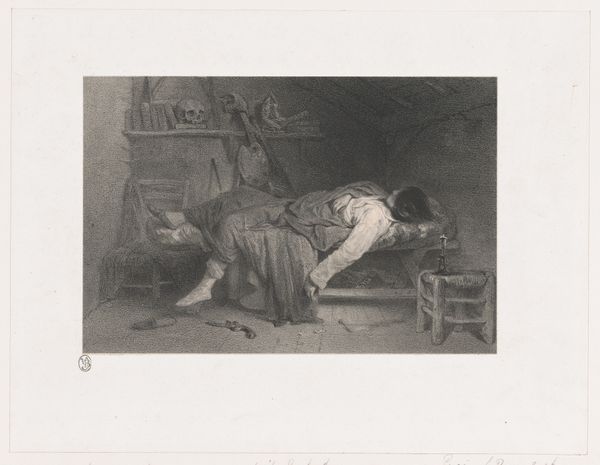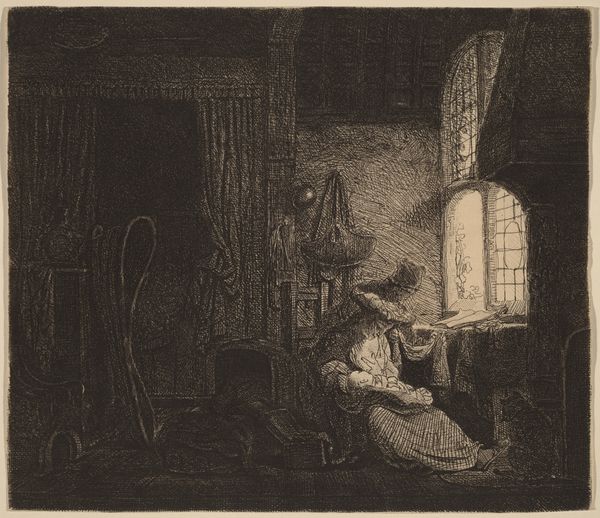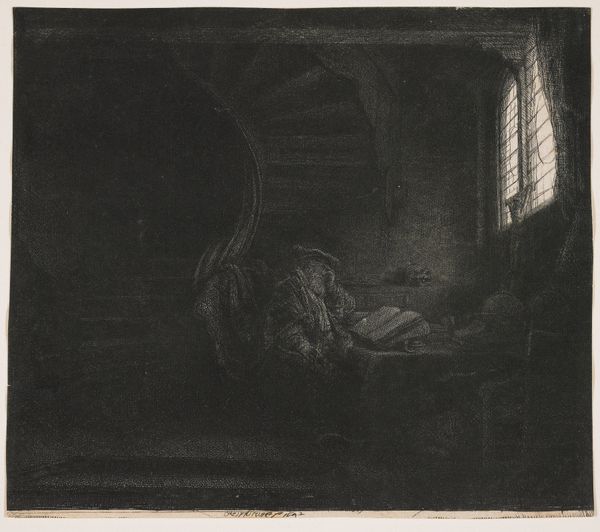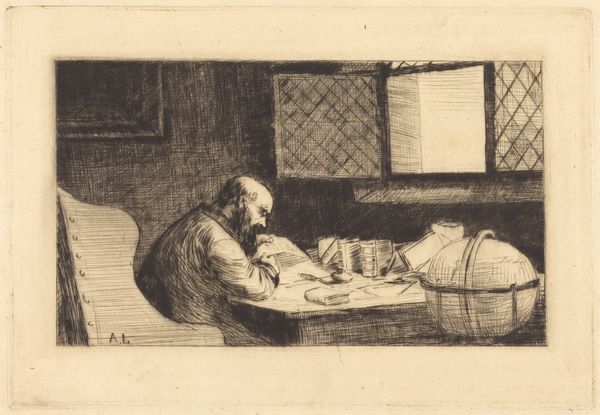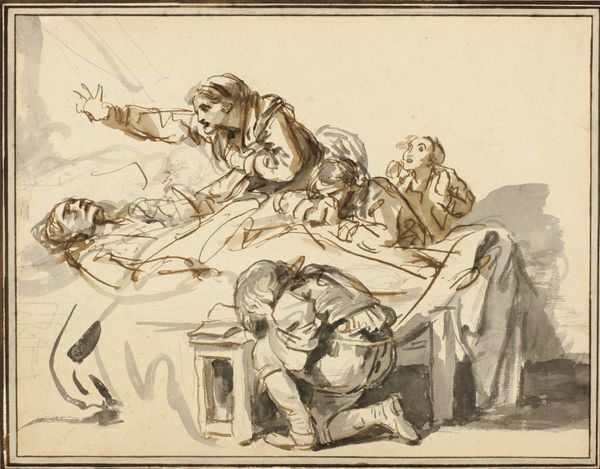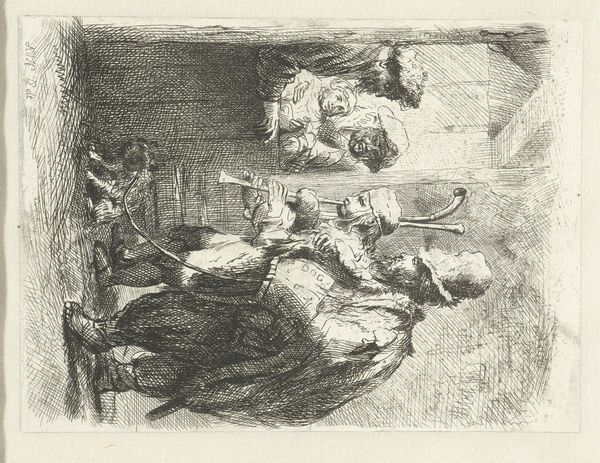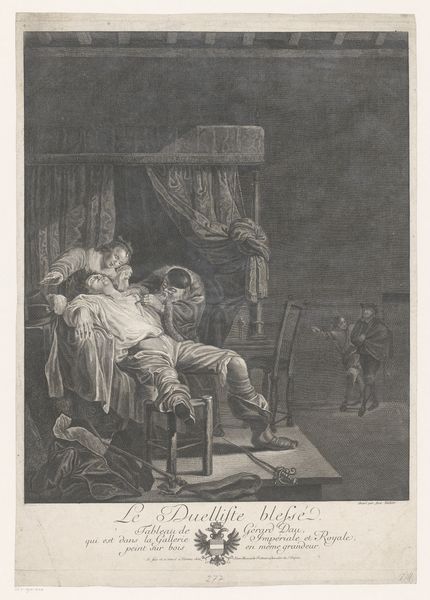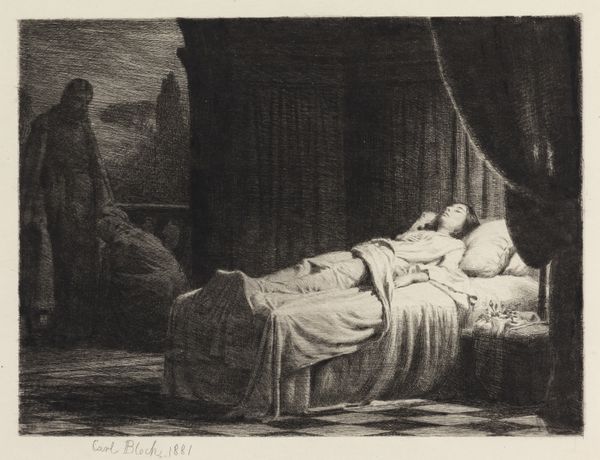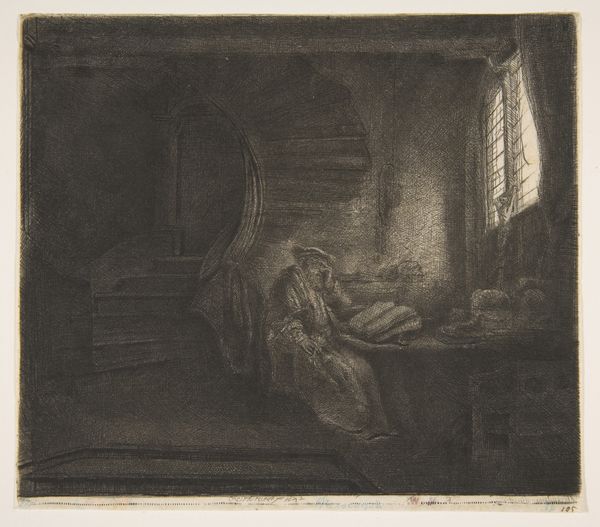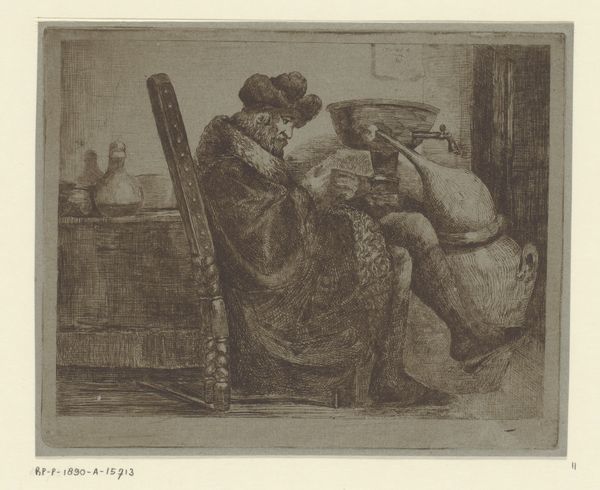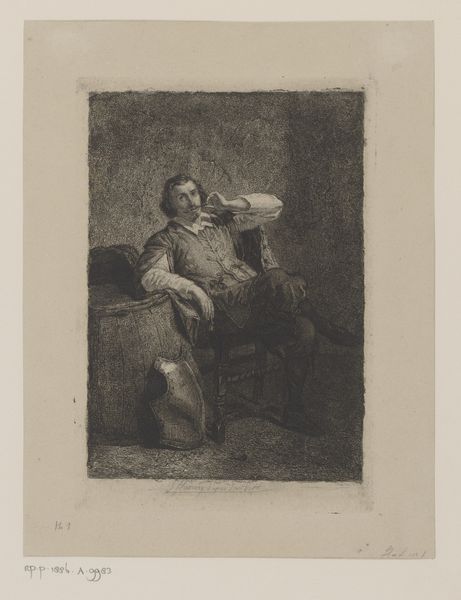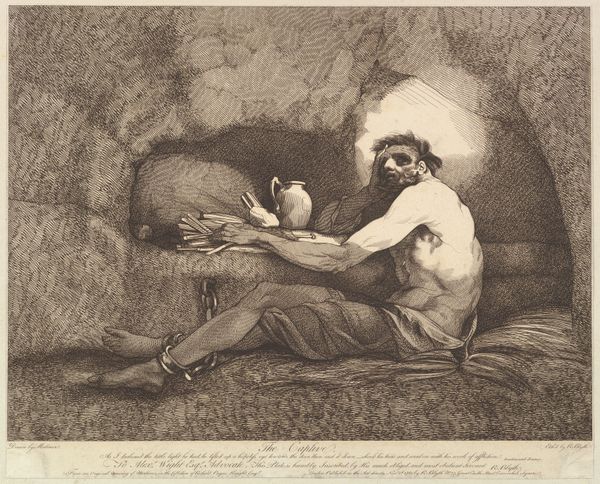
print, etching, engraving
#
portrait
#
pencil drawn
#
self-portrait
# print
#
etching
#
romanticism
#
portrait drawing
#
history-painting
#
engraving
Dimensions: sheet: 13.2 × 22.8 cm (5 3/16 × 9 in.)
Copyright: National Gallery of Art: CC0 1.0
Joseph Fischer created this self-portrait using etching, a printmaking technique involving acid and metal. He likely worked on a zinc or copper plate, drawing through a waxy ground to expose the metal, which was then bitten by acid to create recessed lines. Notice how the etched lines define the subject's form, and create tonal variations to give the image depth. The physical process of etching influences the artwork’s aesthetic by giving it a tactile quality, and lending itself to fine details as seen here. By using an established printmaking technique such as etching, Fischer situates himself within a history of craft and fine arts traditions. The labor-intensive process of preparing the plate, etching the design, and printing each impression reflects the amount of work involved in the production process. Understanding the materials, making, and context of this artwork is vital to appreciate its full meaning, which challenges the traditional boundaries of fine art and craft.
Comments
No comments
Be the first to comment and join the conversation on the ultimate creative platform.
